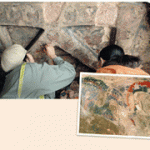 Tony Kouzarides tells the story of his early career as a comedy of errors. He started his Ph.D. at the University of Cambridge in the U.K. in 1981 studying the cancer-inducing potential of human cytomegalovirus. After a year of inserting part of the virus’s DNA into target cells, the cells showed almost no signs of cancer. He couldn’t rule out that other parts of the virus might do it, but he also couldn’t publish his early results. What he could publish by the end had more to do with genetic sequencing, an area he did not want to pursue.
Tony Kouzarides tells the story of his early career as a comedy of errors. He started his Ph.D. at the University of Cambridge in the U.K. in 1981 studying the cancer-inducing potential of human cytomegalovirus. After a year of inserting part of the virus’s DNA into target cells, the cells showed almost no signs of cancer. He couldn’t rule out that other parts of the virus might do it, but he also couldn’t publish his early results. What he could publish by the end had more to do with genetic sequencing, an area he did not want to pursue.
After a short postdoc at Cambridge sequencing cytomegalovirus, he landed a second postdoc in a lab in New York studying oncogenes. There, he spent 2 years developing an unconfirmed and unpublishable hunch. On the strength of that record, he deadpans, he unsuccessfully applied to lead his own research group.
Continue reading Creativity and Persistence Overcome Failure

